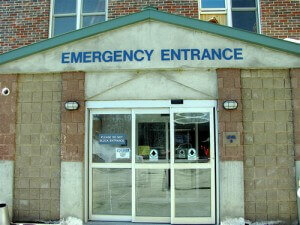Emergency rooms in the United States are incredibly busy. Last year, there were over 130 million emergency room visits. That means, on average, one out of every two American went to the emergency room. One-fifth of those ER visits were patients under the age of 18. As more people use ERs as their first choice in health care, ERs around the country are operating above capacity.
Emergency rooms are an essential part of the United States health system. They can handle just about any health issue at any time of day. ERs are designed to provide life- and limb-saving care quickly. ERs also have a policy of never turning people away regardless of whether they have life insurance or are in the country illegally.
Unfortunately, this leads to abuse. For people who have nowhere else to turn, the ER is their only choice for even minor health issues. Or, they may wait until the minor health issue becomes serious. Either way, this is leading to clogged emergency rooms, which can lead to longer wait times for those who need treatment quickly.
Conditions that May Require Emergency Care
There are no clear cut guidelines for determining when one should visit an emergency room. When in doubt, it is best to err on the side of caution and visit an emergency room. Below are some conditions that may require a trip to the emergency room:
- Serious burns
- Bleeding of the vagina during pregnancy
- Fevers with high temperatures or a rash
- Injuries to the head or eyes
- Broken or dislocated bones
- Vision loss
- Bleeding of the intestines
- Swelling and pain of the testicles
- Sever heart palpitations
- Altered mental states, confusion, or difficulty speaking
- Severe pain starting halfway down the back or in the abdomen
- Continuous chest pain radiating from the jaw or arm or accompanied by vomiting, shortness of breath, or sweating
- Seizures
- Continuous wheezing or shortness of breath
- Fainting or loss of balance
- Paralysis
- Fever in a newborn baby
- Deep cuts
- Severe cold or flu symptoms
- Hemorrhaging
One may also want to visit the emergency room if there is a condition not mentioned above but that requires immediate attention when there are no other health care providers available. Also, for some of these emergencies, 911 may need to be called.
Urgent Care Is Different from Emergency Care
In a recent study, of the people who visited an emergency room and were not admitted to the hospital, 48 percent went to the ER because their doctor’s office was not open. It is often hard to get same-day appointments with one’s doctor’s office. For those who need same-day help but cannot get an appointment, there are urgent care facilities.
Urgent care facilities are walk-in clinics that provide ambulatory care. They do not have the same wide scope of treatment abilities an ER would have, but they do provide a good alternative for minor immediate care needs. Also, there are even some 24-hour urgent care facilities.
Some of the more common ailments treated at urgent care facilities are sore throat, painful urination, sprains, vomiting, diarrhea, and minor fevers.
For anyone who has received a bill from the emergency room, it is clear which of the two health care providers are preferable financially. Urgent care facilities are much less expensive than ERs. Health insurance plans also tend to have a much higher (hundreds of dollars) copay for ER visits as well.
Conclusion
When accidents happen, it is important to have a plan ready for how to deal with them. By understanding the purposes for emergency rooms and urgent care centers, one can be prepared to take the appropriate actions when disasters strike. Knowing the hours of the closest urgent care center and what services it can handle may save time and money.
(http://www5.statcan.gc.ca/bsolc/olc-cel/olc-cel?catno=82-003-X20040017039&lang=eng)

